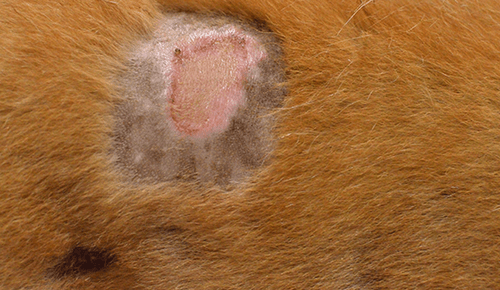
The dog’s hair fell out. What to do?

Contrary to popular belief, most hair loss is due to skin conditions, not vitamin deficiencies, liver disease, or “something hormonal.”
Hair loss can be partial and complete, local and limited or diffuse – this is when on large areas of the skin the hair looks thinned out or the entire coat of the dog looks like “moth-eaten”. In some diseases, hair loss can be symmetrical. In medical terminology, a skin lesion with hair loss is called alopecia, but this is only a term for the convenience of describing skin lesions, and not a diagnosis.
Pathological processes in the skin are manifested in the form of skin lesions, hair loss is an example of one of the possible skin lesions, pimples, pustules, crusts, blisters, dandruff, scratches, redness and darkening of the skin, thickening, etc. can also be observed. skin diseases are manifested by one or another set of lesions, the same lesions can occur with completely different diseases, so the diagnosis is never made only by the results of the examination, additional studies or tests are almost always needed to confirm the diagnosis.
What should I do if my dog has bald patches?
If you remember that your neighbors dog also had bald patches, and decide that you need to ask what they smeared them with, then the answer will be wrong. Or you say: “But the skin is completely normal, and they don’t bother the dog either, it will go away on its own,” this is also a wrong answer.
The best thing you can do in this situation is to make an appointment with the dog at the veterinary clinic. During the appointment, the doctor will conduct a complete clinical examination, ask you about living conditions, feeding habits, examine the dog’s skin in detail. Then he will make a list of possible diagnoses and offer tests necessary to confirm or exclude these diseases.
Frequent diseases are common, and rare diseases are rare. Therefore, in the diagnosis of any disease, it is always customary to go from simple to complex, and skin diseases are no exception. Suppose, in this case, possible diagnoses would be localized demodicosis, dermatophytosis (lichen), bacterial skin infection (pyoderma). Required diagnostic tests: deep skin scraping to detect demodex mites, trichoscopy, Wood’s lamp examination, culture to diagnose lichen, and stained smear-imprint to diagnose bacterial infection. All of these tests are quite simple and are often performed right at the time of admission (except for culture, the results of which will be in a few days). At the same time, if demodex mites are found in the scraping, this is already enough to make an accurate diagnosis.
Helpful advice
It is better to contact the clinic, which has its own laboratory, then the results of the research can be obtained very quickly or right at the time of admission. Dermatologists usually perform simple tests right at the appointment.
Therefore, if a dog’s hair has fallen out, then before starting treatment, it is necessary to find out the cause of the hair loss, that is, to treat not the hair loss as such, but the disease that causes it.
Diseases that cause hair loss
Dermatophytosis, demodicosis, scabies, bacterial skin infections, skin injuries and burns, hair loss at the injection site, congenital hairline anomalies, follicular dysplasia, sebaceous adenitis, dilute alopecia, hyperadrenocorticism, hypothyroidism, dwarfism.
The article is not a call to action!
For a more detailed study of the problem, we recommend contacting a specialist.
Ask the vet
November 2, 2017
Updated: July 6, 2018





